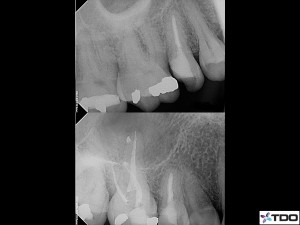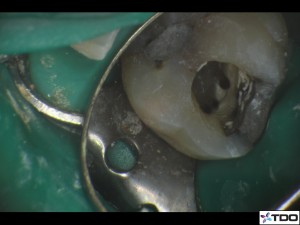The presence of complex anatomy in the mesiobuccal root of the maxillary molar is widely known. Statistically, the maxillary first molar is the most commonly referred tooth in my practice for both initial treatment and retreatment. A healthy respect for this anatomy is a good reason why.
I started this blog as an opportunity to share my thoughts and experiences as an endodontist. The treatment of this anatomy is an integral part of what I do daily, and as such, I can tell you it has the potential to be extremely challenging. I would like to start with some thoughts for the practitioner considering treating the maxillary molar or with an interest in how I address this clinical challenge.
The first step is acquiring the knowledge of where the anatomy should be, and that is based on both the literature, as well as clinical experience. For those without the clinical experience, there are a number of online resources out there where they can gain some exposure, including DentalTown and Roots. There are also textbooks, such as Pathways of the Pulp, that will show you what the likely anatomical configurations are. Unfortunately, nature is much more creative than what is usually documented, so visualizing the anatomy becomes easier with experience. In addition, it is important to understand the anatomy as it exists in adolescents and also how it changes as we age. The anatomy is dynamic, viewing it as such is more difficult, but much more useful than a static rendering of the canal system.
The second step is changing your frame of mind in treating the tooth. The anatomy is going to be revealed to you in the time that it will be revealed. In other words, if your priority is to get the case completed in the least amount of time, stop reading now. It is not uncommon for me to take as much time to find, negotiate and prepare the accessory anatomy as it does to treat the other three main canals. This is the reality of complex endodontics. It does not apply exclusively to this particular tooth, but rather to all of them. You cannot rush a tooth into being a success. You can rush it to completion, but as we know, completion does not necessarily equal success.
The third step is to get an adequate armamentarium. The center of this is the dental microscope. You can perform endodontic treatment on any tooth in the mouth without a microscope, you can find mb2s without a microscope, and for many years endodontics were performed without a dental microscope. With that said, you will find more accessory anatomy while being able to conserve more tooth structure with a dental microscope. You will also be able to work with better ergonomics and will be able to work longer, with less fatigue. Some other items that are invaluable are Munce burs, available at www.cjmengineering.com and flexible mirrors, available at www.eie2.com. The latter are extremely helpful when working on patients with limited opening or on second molars.
Finally, I learn from every single tooth I treat. The more complex the tooth, the more I learn. The maxillary molar has complex anatomy particularly but not exclusively in the mesiobuccal root. Communication often exists in the mb root, but it occurs at separate levels along the length of the canal. There are also cases where the mb2 exists as a single canal in a completely separate root. The first case in the series is below. Three mesiobuccal canals are visible in the photo, and the case was treated over two visits with calcium hydroxide as the interim medication. This gentleman napped(snored) through both appointments. His first visit was an acute situation and he had not slept, the second, I think he just wanted to nap.
Tooth #3:Necrotic pulp, Acute Apical Abscess
I really love my job.

